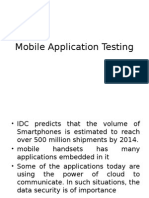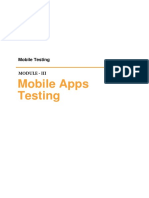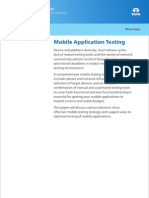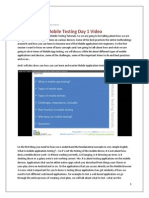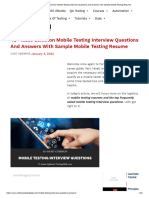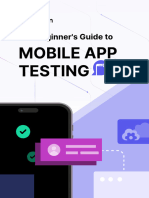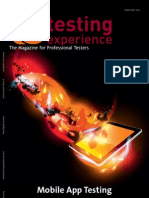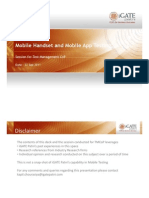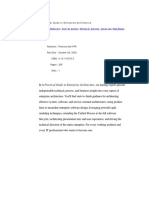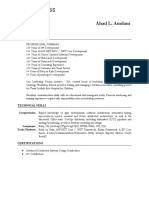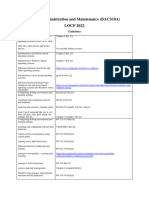0% found this document useful (0 votes)
130 views20 pagesMobile Apps Testing
The document discusses challenges, types, and emulators related to testing mobile applications. It outlines key challenges like device fragmentation and network differences. It describes types of testing like functional, usability, performance, compatibility, and security testing. It also discusses using emulators for testing on different devices and platforms.
Uploaded by
Rahul ChauhanCopyright
© © All Rights Reserved
We take content rights seriously. If you suspect this is your content, claim it here.
Available Formats
Download as PDF, TXT or read online on Scribd
0% found this document useful (0 votes)
130 views20 pagesMobile Apps Testing
The document discusses challenges, types, and emulators related to testing mobile applications. It outlines key challenges like device fragmentation and network differences. It describes types of testing like functional, usability, performance, compatibility, and security testing. It also discusses using emulators for testing on different devices and platforms.
Uploaded by
Rahul ChauhanCopyright
© © All Rights Reserved
We take content rights seriously. If you suspect this is your content, claim it here.
Available Formats
Download as PDF, TXT or read online on Scribd
/ 20




